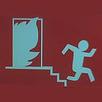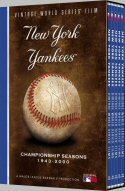|
Larry Mahnken and SG's | ||
|
| Replacement Level Yankees Weblog |

|
|
"Hey, it's free!" | ||
|
|
|
Larry Mahnken and SG's | ||
|
| Replacement Level Yankees Weblog |

|
|
"Hey, it's free!" | ||
|
|
|
Featuring: Larry Mahnken SG sjohnny TVerik Sean McNally Fabian McNally John Brattain This is an awesome FREE site, where you can win money and gift certificates with no skill involved! If you're bored, I HIGHLY recommend checking it out!
 
The New York Yankees Vintage World Series Films DVD Set, available from A&E. Yankees Tickets World Series Tickets MLB All Star Tickets NFL Tickets Purchase your Onlineseats.com is your #1 source for MLB tickets, NY Mets Tickets, Cubs Tickets, Yankees Tickets, Red Sox Tickets, Giants Tickets, Astros Tickets, Angels Tickets, Phillies Tickets.
Buy all your MLB Tickets,
Laser Keyboard Brazil Flowers TickCo.com for premium New York Yankees Tickets Boston Red Sox Tickets Chicago white Sox Tickets A's Tickets Angels Tickets New York Mets Tickets St Louis Cardinals Tickets Cubs Tickets Dodgers Tickets "I'm not a pessimist, I'm an optimist. Things are really worse than I say they are." - Steve South

January 2001 April 2003 May 2003 June 2003 July 2003 August 2003 September 2003 October 2003 November 2003 December 2003 January 2004 February 2004 March 2004 April 2004 May 2004 June 2004 July 2004 August 2004 September 2004 October 2004 November 2004 December 2004 January 2005 February 2005 March 2005 April 2005 May 2005 June 2005 July 2005 August 2005 September 2005 October 2005 November 2005 December 2005 January 2006 February 2006 March 2006 April 2006 May 2006 June 2006 July 2006 August 2006 September 2006 October 2006 November 2006 December 2006 January 2007 February 2007 March 2007 April 2007 May 2007 LINKS Yankees Sites and Columnists Nomaas.org General Baseball Sites & Columnists At Home Plate Rotoauthority.com The Book Blog - Playing the Percentages in Baseball(Tango, MGL, Dolphin) Yankees Blogs Almost Perfect Baby Bombers Baseball Mania Bronx Banter Bugs and Cranks Canyon of Heroes Dugout News Eephus Pitch Here Comes Number 27 High and Tight Lohud Yankees Blog No Sense Worrying Pinstripe Potentials River Ave. Blues Soft Hands The Stat Boy of the Empire Was Watching Yankees Chick Yankees Fans in Foreign Lands Yanks Blog Other Team Blogs Anaheim Angels All the Way Bucco Blog San Francisco Giants Blog Viva El Birdos Look what people have to say about Larry Mahnken's commentary! "Larry, can you be any more of a Yankee apologist?.... Just look past your Yankee myopia and try some objectivity." "Mr. Mahnken is enlightened."
"Wow, Larry. You've produced 25% of the comments on this thread and
said nothing meaningful. That's impressive, even for you."
"After reading all your postings and daily weblog...I believe you have truly become the Phil Pepe of this generation. Now this is not necessarily a good thing."
"you blog sucks, it reeds as it was written by the queer son of mike lupica and roids clemens. i could write a better column by letting a monkey fuk a typewriter. i dont need no 181 million dollar team to write a blog fukkk the spankeees"
"i think his followers have a different sexual preference than most men"
"Boring and predictable."
"Are you the biggest idiot ever?"
"I'm not qualified to write for online media, let alone mainstream
media."
This site is best viewed with a monitor.
|
Disclaimer: If you think this is the official website of the New York Yankees, you're an idiot. Go away. March 31, 2006
The Defense of the 1996-2001 Yankees by SG
In my earlier post about the 2005 Yankees and their horrific defense, rsmith51 asked about how the 1996-2001 Yankees would fare. With a little digging at ESPN's site, I was able to find Zone Rating back through 1996, so I gave it a shot.
March 30, 2006
Getting Closer by SG
With Randy Johnson pitching in a minor league game yesterday for his final pre-season tuneup, the regular season is drawing near.
March 28, 2006
The Best Defense is a Good Offense by SG
If the Yankees hope to make any noise in the postseason this year, they'd better hope that this title holds true and they can hit their way through, because their defense has been bad recently, and doesn't look to be much better in 2006.
March 27, 2006
Ouch. My Wang by SG
Chien-Ming Wang took a ball off his shin/knee yesterday, and it may cause him to miss his next start. Amazingly, the Yankees could start the season with Jaret Wright in the starting rotation.
March 24, 2006
I Believe by Larry Mahnken
As of about, oh, 5:30 PM (Eastern Time) on March 24th, 2006, these things I believe, in no particular order:
by SG
The Yankees beat the Astros 8-1 last night.
March 23, 2006
Can the 2006 Yankees score 1000 runs? by SG
The addition of Johnny Damon has "experts" everywhere predicting that the Yankees may score 1000 runs this year. While the talent may be on hand to actually do it, based on the 3000 seasons I ran in Diamond Mind, the odds of it actually happening are about .4% (it happened in 13 out of 3000 runs). So what would it take for the Yankees to score 1000? Here are the sample stats for a season where the Yankees scored 1007.
March 22, 2006
Random Stuff by SG
After all the numbers I've been throwing out for the last few weeks, I think it's time to step back and just read some puff pieces. Here's what in the news out of Yankee camp right now.
March 20, 2006
The 2006 Diamond Mind Projection Blowout by SG
Last year, I ran 2000 Diamond Mind Simulations with Diamond Mind Baseball and projection disks by Diamond Mind and ZiPS. This year, I've done it again, and also added another 1000 runs using Baseball Prospectus's PECOTA projections.
March 19, 2006
Looking Ahead to 2006 - Dotel, Sturtze, and the rest by SG
So far in the pitching projections, I've accounted for 965 innings from the starters, and another 265 innings from the relievers, which is a total of 1230 innings. The remaining innings, about 200, will hopefully be primarily split between Tanyon Sturtze and Octavio Dotel.
March 16, 2006
Looking Ahead to 2006 - The Lefty Relievers by SG
Wayne Franklin. Wayne Freakin' Franklin. The mere thought of his name conjures up the memories of perhaps Joe Torre's worst decision of last season, where he brough in Franklin to blow a 1-0 lead in a 2-1 loss in Texas.
March 15, 2006
Looking Ahead to 2006 - Kyle Farnsworth by SG
After two superlative years as Mariano Rivera's setup man, Tom Gordon has moved on to Philadelphia to close. Despite his problems in the postseason, Gordon was a huge asset for the Yankees in 2004 and 2005. It's interesting to compare Gordon and another setup man the Yankees had signed a few years back.
March 14, 2006
Looking Ahead to 2006 - Mariano Rivera by SG
More than any other player on the Yankees since 1995, Mariano Rivera has been the face of the Yankees' recent success. Despite his advancing age, Rivera turned in perhaps his best season since 1996, setting a career best with an ERA+ of 323 and holding opposing hitters to a line of .177/.235/.230.
March 11, 2006
Looking Ahead to 2006 - Santana, Halladay, Wright, Small by SG
Two of these guys will be contending for the AL Cy Young this year. Two will not. I'll leave it to you as the readers to discern which are which.
March 10, 2006
Looking Ahead to 2006 - Carl Pavano by SG
For the bargain price of $9,000,000, the Yankees got 100 innings of below average pitching from Carl Pavano in 2005. The man that nomaas.org has taken to calling Glass Carl due to his litany of injuries is already behind schedule this year, and not likely to break camp with the team. The cautionary tale of J.R. Richard should give pause to anyone who wants to question a player and their injuries, so that is not something that I feel comfortable doing.
March 9, 2006
Looking Ahead to 2006 - Shawn Chacon by SG
Much like Chien-Ming Wang, Shawn Chacon came out of nowhere(in a figurative sense) to play a key role in the Yankees making the playoffs. Chacon was acquired from the Colorado Rockies on July 28, for minor league relievers Ramon Ramirez and Eduardo Sierra. He came over with a 2-16 record in his last 18 decisions over 2004 and 2005, although he carried a respectable 4.09 ERA for a Colorado pitcher when the Yankees got him.
| ||||||||||